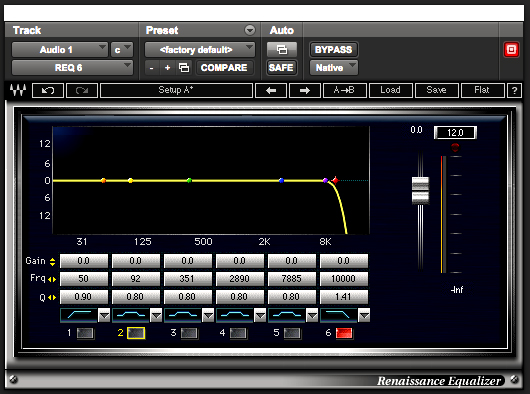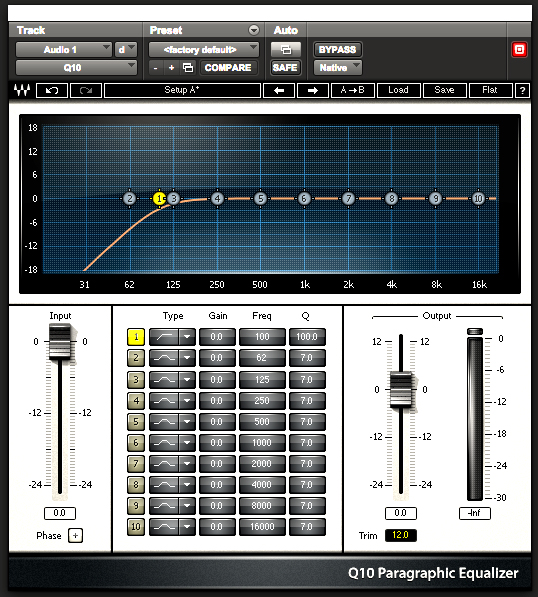
Editor’s Note: “28 Weeks of Post Audio” originally ran over the course of 28 weeks starting in November of 2016. Given the renewed focus on the importance of audio for productions of all types, PVC has decided to republish it as a daily series this month along with a new entry from Woody at the end. You can check out the entire series here, and also use the #MixingMondays hashtag to send us feedback about some brand new audio content.
With the advent of digital audio, we’ve come to expect considerably more from our audio that we did in days past and noise reduction is a key component of that. In analog audio we got used to bouncing tracks into other tracks, and in finding creative ways to lessen the sonic impact of doing that. There were many strategies for dealing with the noise and issues that come from analog. Today, free digital audio workstations can easily mix 100 tracks, and the only thing that messes it up is lousy recordings to start with and misused or badly applied filters and effects. Fortunately, noise reduction devices are abundant, affordable and generally very high quality.
The key idea with noise reduction is – do no harm. With noise reduction, often just a little is enough. Or rather, said differently, sometimes a little bit of noise is just fine. Overly noise reduced tracks can sound far worse than what was started with, so always use a gentle hand when applying the reduction. Sometimes it takes a combination of filters. Sometimes denoisers require a couple of light passes rather than a really big single reduction. Every case will be unique but the main rule holds for noise reduction – less is more.

Since the origin of the noises come from many places, noise reduction must be tackled in a number of ways. The simplest way to filter out unwanted noise is with an EQ. I have several posts on this topic. For example, if there is a lot of hiss in the sound and the energy of that hiss is coming from say 10kHz and above, then perhaps a low pass filter with a cutoff of 10kHz will effectively do the trick. The engineer’s ears will always make the final determination.
When making such drastic cuts listening, bypassing, and changing settings is always highly recommended. There may be other, also important sounds in the track being filtered, that are above 10kHz, so a straight EQ frequency cut might not be the best choice. Only applying the filter and listening will determine its usefulness. With digital audio there are many ways and many tools to tackle these problems.
In this short post, there is no way to cover all the iterations of noises and their best reductions, but here are a few typical issues and typical solutions. For electrical hum or ground hum – EQ using a high pass filter is a good place to start. Those electrical hum issues are in the 50Hz to 120Hz range. A graphical EQ could precisely eliminate those frequencies while offering a variable slope on how precisely to make the cut. Apply the filter and change the center frequency of the filter and the slope to find the sweet spot.

If this is a dialog track, then a careful cut at the right frequency might do the trick and not require a lot more fussing. Men’s voices can also be quite low in frequency so such a cut might inappropriately affect the voice. As with all things audio, your ears will be the best judge. Also, if too much of the low frequencies are removed from dialog tracks, eventually you could end up with a pass filter that mimics the sound of a telephone. Which is good if they are talking on the phone, otherwise it’s time to back off on the filter cut!
Sorry to say for most air conditioning noise – one of the most common issues of noise – there is no silver bullet for control or reduction. A/C can be variable and nonspecific and it can cover a broad spectrum of sound frequencies. This can create other problems when reducing the noise with only an EQ. It certainly can be partially addressed with EQ and it might be a combination of low and high cut filters, also perhaps a steep notch cut, at particular frequencies, as well as other things. This can be a recipe for disaster if applied too heavy handed. Remember – listen and – do no harm.
There are many hardware and software approaches to noise reduction on broad band noises such as A/C. For hardware based noise reduction, CEDAR is the gold standard, using not only a software component but also a dedicated hardware controller for very precise noise reduction and removal.
There are too many software noise reducers out there to discuss adequately here. Many are quite good and have a particular application of noise removal superior to others. Some are more all-around packages that are meant to give many options to tackle problematic recordings. Hands down, the most popular bundle of noise reduction plugins available as of today is RX, made by audio software company iZotope.
RX is a powerful series of modules meant to address various typical noise problems. There is a hum filter designed specifically for hum issues. There is a click module to declick, dethump or create a continuity of audio is there is a drop out. There are a couple of denoisers, one is the dialog denoiser which can be applied to a track and run as a real time plugin like an EQ or a compressor. There is also a more powerful denoiser that can learn the noise and reduce it from there. These are powerful and intuitive filters that can work wonders on problematic recordings.
One specialized module is the spectral repair tool which can take a snapshot of a recording and render it as a picture. In this spectral picture often hits and pops are clearly identified. Then there are tools to reduce, repair or replace these issues. It is a very useful tool that is also very precise in locating and eliminating problems. I have a review of an older version of the program here on PVC.
Noise is a problem with soundtracks since it is a blending of sources to create the final mix. If all of the elements have noise issues, then when played together they multiply the problems from there. That being said the reverse can also be true – too much noise reduction will take the life out of a track, make it dull or metallic sounding. In many cases over processed noise reduced tracks can be worse than the initial problem to start with. It is imperative to use your ears and your skills to find a balance in reducing noise but keeping the quality of the recordings high. Back to rule one of noise reduction – do no harm.
This series, 28 Weeks of Audio, is dedicated to discussing various aspects of post production audio using the hashtag #MixingMondays. You can check out the entire series here.
Woody Woodhall is a supervising sound editor and rerecording mixer and a Founder of Los Angeles Post Production Group. You can follow him on twitter at @Woody_Woodhall

